This edition of Movies to Watch After… recognizes the direct and indirect cinematic roots of Sergio as we recommend fans go back and learn some film history, become more well-rounded viewers, and enjoy likeminded works of the past, even if it’s the fairly recent past. As always, we try to point you in the easiest direction of where to find each of these highlighted titles.
Considering how big of a hero and celebrated figure Sergio Vieira de Mello was for the United Nations, his lack of familiarity among most Americans is unfortunate. Perhaps the fact that his legacy has included an award in his name (“Sergio Vieira de Mello Citizen of the World”) given to Angelina Jolie and Nicole Kidman should spark curiosity? Or maybe that Jolie has also given lectures at the UN in his memory? You’d think that his biographer, Samantha Power, calling him “a cross between James Bond and Bobby Kennedy” would attract more mainstream attention.
Well, now Vieira de Mello has received the biopic treatment courtesy of Netflix, and that should put a deserving spotlight on the star of diplomacy who died in a terrorist bombing in Baghdad in 2003. In Sergio, the UN Special Representative and High Commissioner for Human Rights is portrayed by Wagner Moura, an actor I love but who hardly does the man justice in his looks or charm in my opinion, while Ana de Armas plays his girlfriend and UN economic adviser Carolina Larriera. The movie may not be the clearest tribute to Vieira de Mello, but hopefully, it serves as an introduction.
Sergio is the dramatic feature debut of Greg Barker, who is mostly known for his documentary films. In fact, just two days after the biopic’s release on Netflix, Barker had a new doc feature about the War in Afghanistan, titled The Longest War, premiere on Showtime. In honor of that achievement plus the potential for newfound interest Vieira de Mello, I’m inspired by Sergio to recommend the following mix of documentaries and narrative features offering further context for what we see in the dramatized (and sexed-up) version of his life and his work and the events involved in his story.
Cold Case Hammarskjöld (2009)

Vieira de Mello never reached the position of Secretary-General, though he was considered a likely candidate for the UN leadership role eventually, had he lived. Nevertheless, he did attain a level of fame that few others at the organization do, even in higher positions, and he might have made more enemies, as well. Vieira de Mello was targeted by al-Qaeda for his work securing the independence of East Timor, and officially, he was killed under the direction of Abu Musab al-Zarqawi. But he also clashed against the US in his methods, and of course, there are conspiracy theories regarding the bombing that took his life.
Probably not strong enough to lead to a cinematic examination like Cold Case Hammarskjöld, however. Mads Brügger’s complex yet compelling investigative film considers the truth behind the 1961 plane crash death of Dag Hammarskjöld, the second Secretary-General of the United Nations. Was he shot down? By whom? Brügger, who again stars in his own film as a roguish guide for viewers, may not be as interested in the truth so much as the idea that we’ll never know all the answers, making his documentary out to be a kind of intentionally convoluted and inconclusive nonfiction film noir.
Stream Cold Case Hammarskjöld on Hulu
Sergio (2009)
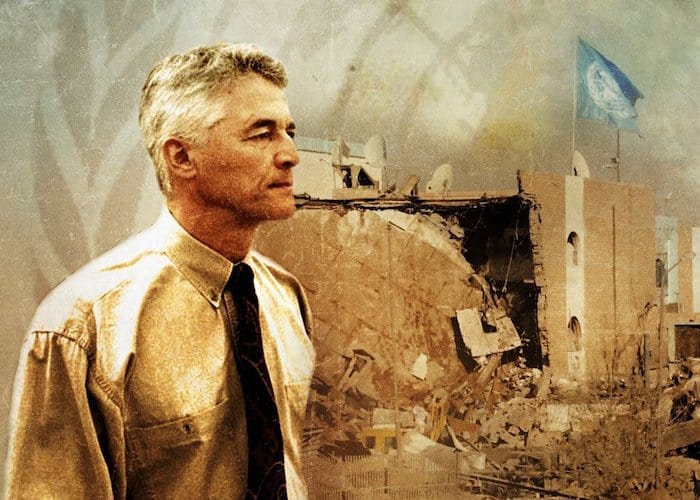
Normally, I’d have recommended the original to watch before the remake in my annual preview of unoriginal movies, but in the case of Sergio, I wasn’t prepared for the arrival of the biopic. Therefore, Barker’s own earlier film of the same name has a spot on this list. Like the dramatic version, this documentary made its debut at the Sundance Film Festival, where it won an award for the work of editing genius Karen Schmeer, one of her last achievements before her tragic death. Sergio, which was originally released by HBO, was later nominated for an Emmy and a PGA Award.
The documentary is actually a lot like the biopic, in that it uses the bombing and rescue attempt as a through-line framework for the story and then jumps around to other parts of Vieira de Mello’s life and his service in the UN. There’s a surprising amount of footage for both elements, particularly of the immediate aftermath of the bombing from inside the Canal Hotel HQ, but most of the biographical storytelling comes in the form of interviews, including those with Larriera, Gil Loescher, and Paul Bremer, all of whom are portrayed in the remake, plus Tony Blair, Condolezza Rice, and author Samantha Power, whose book Chasing the Flame: Sergio Vieira de Mello and the Fight to Save the World serves as the basis for both the doc and the biopic.
Because I should have recommended this doc earlier as one of the movies to watch before the movies of 2020, I also want to spotlight another documentary about Vieira de Mello. En Route to Baghdad premiered just over a year after his death, and I wonder if it was planned before the bombing with the intention of celebrating his peacekeeping and humanitarian work while he was still alive. The film, which was broadcast on PBS as an episode of Independent Lens and is now available cheap on DVD, is more of a character portrait of the diplomat while Barker’s doc is much more focused on the events involving his death.
Elite Squad (2007)

There is a moment in the biopic Sergio when Vieira de Mello compares the occupation of Iraq to what it’d be like seeing tanks driving around his home city of Rio de Janeiro. He really did make that statement — I believe it’s said in the documentary, as well — but in one interview specifies tanks in Copacabana. That’s the beach area. Well, what about the favelas of Rio? Armored vehicles have definitely been deployed in the poorer areas of the city. In fact, Moura stars in a famous Brazilian movie franchise involving the military police and the drug-ridden slums. Elite Squad is fiction, but it’s based in truth.
In Elite Squad and its 2010 sequel, Elite Squad: The Enemy Within, Moura plays the captain of a real battalion of Rio’s military police that essentially goes to war with the favelas to fight crime. Obviously this unit has been met with controversy over the years. As was the movie. As was the book that director Jose Padilha and go-to brilliant Brazilian screenwriter Bráulio Mantovani (City of God) adapted. Though a thrilling watch, Elite Squad has been criticized for glorifying both the fascistic police unit and the drug lords while also continuing the favela porn that most of the world sees in movie depictions of Rio.
Stream Elite Squad free with commercials on Tubi
No End in Sight (2007)
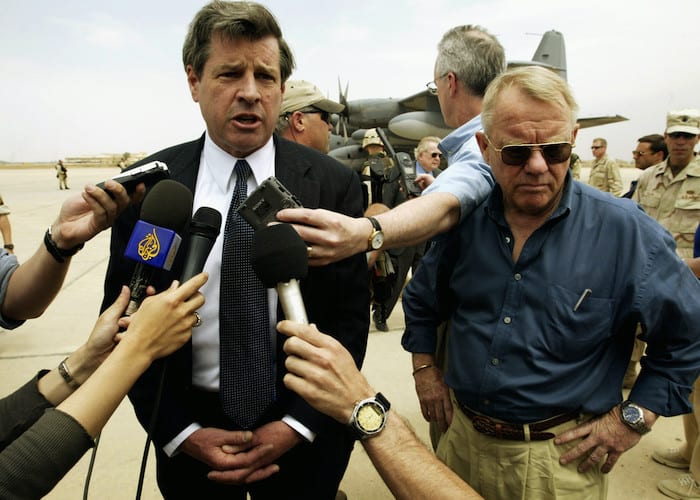
For a comprehensive study of the US occupation of Iraq, at least one that fits within the time constraints of a feature-length film, there’s nothing better than No End in Sight, which earned director Charles Ferguson (Inside Job) his first Oscar nomination. The documentary packs a lot in with its chronological detailing of the invasion, war, and especially the aftermath, focusing on the team tasked with reconstruction and the generally mismanaged efforts to get the country back up and running on its own. No End in Sight is particularly critical of the effort’s leader, Paul Bremer, who is played by Bradley Whitford in Sergio.
Vieira de Mello appears in the film, though only in archival materials obviously. Among the talking heads providing the oral history aspect of No End in Sight include his biographer and Sergio doc interviewee, Samantha Power (she later became the US Ambassador to the United Nations by the way). Aided by narration from Campbell Scott and a WGA Award-nominated script by Ferguson, as well as some tight editing from Chad Beck and Cindy Lee, this film manages to be concise and easy to follow yet never oversimplified in its history, setting a bar that I wish Barker’s films, especially The Longest War, could reach.
Stream No End in Sight via Magnolia Selects
World Trade Center (2006)
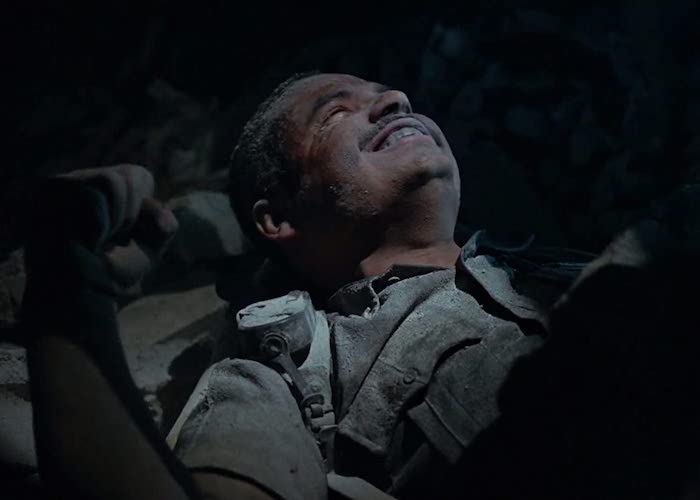
The way Sergio uses the Canal Hotel bombing as a foundation for its storytelling, depicting Moura as Vieira de Mello and Brían F. O’Byrne as Gil Loescher in stationary positions buried under rubble, reminds me of Oliver Stone’s World Trade Center. The 9/11-set drama, which is also based on a true story, stars Nicolas Cage and Michael Peña as firefighters who were similarly trapped when the South Tower of the World Trade Center collapsed following the terrorist attacks on the Twin Towers in New York City. One big difference is that both men were fully rescued in the end, though other characters with them do not survive.
Although it received mostly positive reviews, World Trade Center wasn’t given a lot of consideration at the time and has barely been discussed since. I’ll admit I haven’t watched much of the movie since attending its premiere, but I was very impressed at the time, and that impression has stuck with me. The script by future Oscar nominee Andrea Berloff is economical, and the direction of the scenes of the men trapped in the building is some of Stone’s best work, giving viewers the claustrophobic feeling of being stuck there with Cage and Peña. The Sergio biopic isn’t nearly as successful with its analogous moments.
Stream World Trade Center on Amazon Prime Video
Beyond Borders (2003)
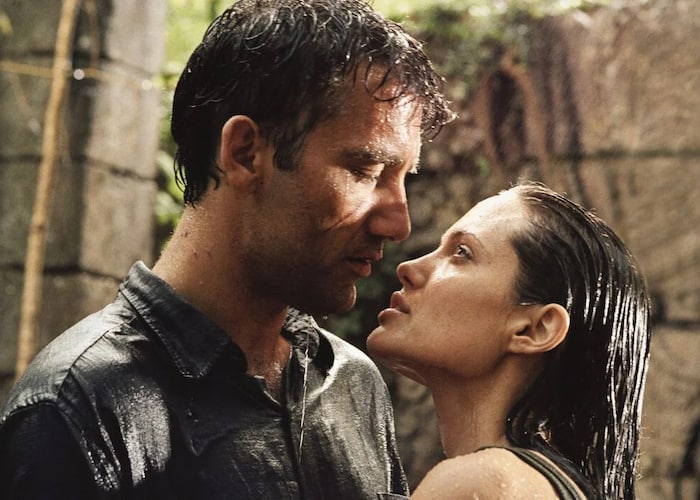
Another movie the Sergio biopic reminded me of, for better or worse, is Beyond Borders. One reason is that the drama, released soon after Vieira de Mello’s death, stars Angelina Jolie, a celebrity involved in the UN with ties to Vieira de Mello’s legacy. She actually became involved with the film because of its relevance to her own humanitarian duties and experiences as a Goodwill Ambassador and member of the United Nations High Commissioner for Refugees, which she’d joined two years earlier following some life-changing things she witnessed during the production of Lara Croft: Tomb Raider.
The other reason is that the movie focuses on a romance, between humanitarian workers played by Jolie and Clive Owen, set at a refugee camp in Ethiopia, and that love story about two white people diminishes what’s going on in the background as just that: set dressing. Sergio does the same thing, focusing a lot of its running time on a sexy romance between Vieira de Mello and Larriera (including a relatively graphic sex scene), although it’s not as objectionable since the film is about the life and character of Vieira de Mello more than the work he did and people he helped and served.
Stream Beyond Borders via Showtime
Death of a Nation: The Timor Conspiracy (1994)

Unless they’ve followed the lectures of Noam Chomsky, most Americans aren’t too familiar with what happened with East Timor between 1975 and the end of the 1990s when the country started to gain its independence from Indonesia with transitional assistance from Vieira de Mello. But the East Timor genocide is one of the many important tragedies of the 20th century. And Vieira de Mello’s involvement in East Timor’s break from Indonesia was a significant factor in him — and the UN overall — becoming a target of al-Qaeda. Neither versions of Sergio are adequate in communicating the situation.
Death of a Nation: The Timor Conspiracy isn’t exactly a comprehensive or accessible history lesson about East Timor under Indonesian control the way No End in Sight is about the US invasion and occupation of Iraq. For one thing, the British documentary was made five years before East Timor began its separation from Indonesia. It’s mainly a clandestine investigative report from journalist John Pilger and director David Munro concerning US and UK complicity regarding the massacre of thousands of Timorese people over the decades, making a connection to Iraq in terms of the West’s help liberating Kuwait but not East Timor, which suffered one of its worst massacres shortly after the end of the Gulf War.
Stream Death of a Nation: The Timor Conspiracy for free on Vimeo
Watchtower Over Tomorrow (1945)
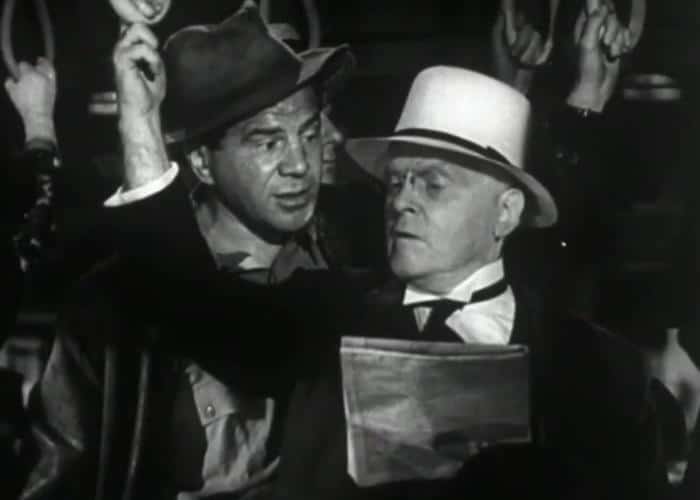
Here’s one more history lesson, but it’s a lot shorter than the others. Watchtower Over Tomorrow is a 15-minute documentary produced by the US Office of War Information towards the end of World War II as the Allies appeared to be heading towards certain victory. The purpose was to communicate the proposals made a few months earlier about the founding of a new international organization that would keep another World War from happening. This organization would be the United Nations, which was formed in the fall of 1945 once the war was over.
Like a lot of government-made documentaries of the era, this one (apparently co-directed without credit by Alfred Hitchcock and Elia Kazan) is kind of corny, particularly because of its dramatized bits, including a constantly revisited segment featuring character actors Lionel Stander and Grant Mitchell. It’s the type in which some fictional figures are discussing the subject of the documentary and then are interrupted by the narrator, whom they then address, breaking the fourth wall. Watchtower Over Tomorrow definitely sells the idea of the UN as a kind of utopian entity, idealistically — whether naively or falsely — pushing the claim that the organization will maintain peace around the world.
Stream Watchtower Over Tomorrow via the Indiana University media collection
A Farewell to Arms (1932)

When it comes to romance amidst world conflict backdrops, there are better films out there than this one, but Ernest Hemingway’s semi-autobiographical breakout novel A Farewell to Arms is the most famous of such stories. At least among the literature of the 20th century. The book has been adapted a few times, not including the more directly biographical account of Hemingway’s experiences depicted in the film In Love and War. This first screen version from 1932 stars Gary Cooper as the Hemingway stand-in Lt. Frederic Henry, who falls in love with nurse Catherine Barkley (Helen Hayes) during World War I.
After watching the 1932 version of A Farewell to Arms, I also recommend the 1943 adaptation of Hemingway’s For Whom the Bell Tolls, which involves a romantic plot set during the Spanish Civil War and is even better. Cooper again stars as the lead character in this story of love and war, which again is based somewhat on the author’s own experiences. This time he’s paired with Ingrid Bergman as a Spanish woman fighting as a member of the anti-fascist guerilla forces. Unfortunately, after these two films, Paramount wouldn’t adapt another Hemingway novel until after Cooper’s death, with 1977’s Islands in the Stream, so the actor didn’t get to continue portraying Hemingway proxies in a kind of Papa Cinematic Universe.
Stream A Farewell to Arms on Amazon Prime Video
0 comments:
Post a Comment